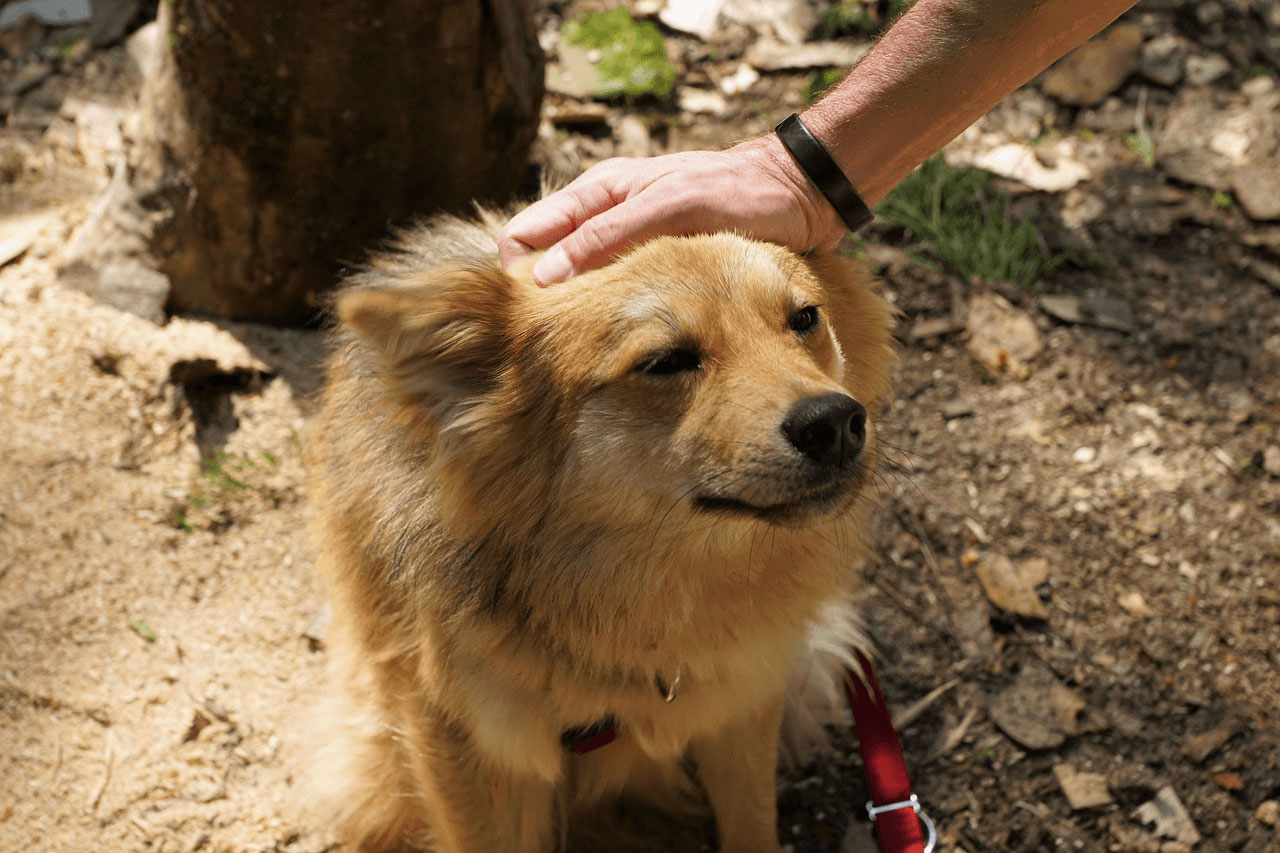Dog positive reinforcement training
Let's face it, for many people, positive education is perceived as a fashionable educational method. That's why I propose you today, through this article, to draw up a portrait of this famous "Care Bear method" to put down all the clichés (and the people who spread them at the same time, we won't be shy).
First of all, what is positive education?
Positive education consists in educating your dog by taking into consideration his emotional state, his character, his sensitivity, the environment proposed, etc. Clearly, when you educate your dog through a positive method, you always try to work on the motivation and cooperation of the dog rather than on its possible fears (the opposite of coercive methods!).
Positive education consists in reinforcing good behaviors, in creating or maintaining an inter-specific relationship (between a master and his dog) based on respect, benevolence and especially the analysis and understanding of the canine behavior.
Moreover, positive education means finding methods adapted to each dog, to each master, with non-coercive tools and techniques that can be adapted to each dog. And yes, because positive education does not consist of a single method: the idea is to always work in a common direction but with techniques specific to each animal because all dogs (and all masters) are different.
But beyond that, whether we talk about positive education, traditional education or natural education (or any other fashionable term), the most important thing in "education" is to always try to understand the dog, how it works, to know how to read its attitudes, to analyze them and especially to take into account its character, its experience, its sensitivity etc.
Without that, we do education for education's sake, without taking into consideration the being and therefore without considering it as such!
A "non positive" education, that is to say, according to us, without the phase of observation and understanding, is to consider the dog as an object! It is to consider that it is not very important to know if he feels good or not at this moment of the learning process. And if thinking like this is being in the world of the Care Bears, then so be it!
Positive education
Let's come back to this term of carefree by the way: it's been several years now that the so-called positive techniques are victims of many clichés, I propose you to throw some of them here : "In positive education, dogs are given treats".
Indeed, in positive education, as I said before, we work on the motivation of the dog rather than on its inhibition. So what better way to motivate a dog than with a treat? Of course, this is not the only source of motivation that exists, but it is the most common.
When training a dog with "positive" methods, we will always try to find what motivates the dog, what makes him happy and it is true that in many cases, it is the treat that the dog will prefer. But it is possible to educate your dog in a positive way without using treats.
In addition, the element that is used to motivate the dog fades over time because when the learning is really acquired, a simple verbal motivation can be enough.
On a personal note, my dog is quite sensitive to the can, so he doesn't really digest the treats sold in specialized stores. So I had to find other forms of rewards, while working on his motivation.
I then noticed that my dog was quite motivated by playing, by getting, etc. I just had to test it out, and it was a good idea. I just had to test, observe and understand my dog.

Then it is true that a dog educated through positive education will be a real king at home, he will have his place at the table and even between dad and mom in bed! But of course 😉
Of course this is not true, with any education, rules of life are essential to put in place to ensure a good cohabitation between the dog and his new social group, namely his adoption family!
In positive education (too), rules must be put in place. Nevertheless, unlike some methods that invent rules of submission, positive techniques consist in integrating rules of sharing within the household:
• sharing food : each one its bowl 😉
• sharing of space : each one its place
• sharing contacts, etc.
Moreover, positive education does not exclude learning how to manage frustration, self-control, renunciation but also prohibition. We are coming to that!
It is considered that leaving a dog without a framework and without limits, is to put him in a situation of insecurity. Prohibitions are therefore part of the limits to be set to guarantee the dog's safety and especially its good integration into our society.
So the prohibition will not necessarily be the "no" because unfortunately this word is often used in a wrong way and therefore does not have much impact on the dog, but the prohibition will be more implemented through the indication of renunciation.
To educate your dog positively is, in addition to telling him "no", to tell him what to do instead. Clearly, we are going to redirect the dog towards a desired behavior rather than simply telling him not to adopt this attitude.

Example of an indication to give up on teaching your dog positively:
Because NO, positive education is not only about reinforcing good behaviors and ignoring bad ones! It is obvious that if your dog is full of mud and jumps on your guests, you are not going to let him do it at the risk of upsetting him.
It goes without saying that you're not going to let your dog attack your couch just so you don't frustrate him either: it's absolutely ridiculous to think that people who train their dogs positively would do that!
For me, the "stop" or "you leave" indication is just as important as a basic indication such as sit, stay or in the basket for example. It allows the animal to return to a calm state when it is in an overly strong emotional state (whether it be excitement, fear, aggression, etc.).
Teaching your dog to give up something is clearly asking him to stop doing what he is doing, even if it gives him great pleasure, but to offer him something else instead. So you can ask a dog to stop digging a huge hole in the garden, chasing a cat, jumping on guests, etc. while offering him something much more fun in return (hence the idea of "giving up is winning", see the concept?).
To do this, you first need to prime the indication. So sorry for the "anti treats", this tutorial is not for you:
• Step 1: In a neutral place (your living room for example) where you can have your pet's full attention, simply say "you leave" (or any other indication of relinquishment that you choose, the most important thing is that it is always the same) and immediately accompany this indication with a treat. In other words, you are conditioning your dog: "you let go" = treat!
• Step 2: Repeat step 1 as regularly as possible (without overloading your dog, it's all a question of dosage). As soon as your dog looks at you and/or is interested in you when you say "you leave it" (in other words, he's waiting for the treat), he's understood the logic. Then make the exercise more complicated by doing it in more and more stimulating places.
WARNING: do not put your dog in a situation of failure, if you see that it is too difficult for him to concentrate because there are too many distractions, go back to a previous step, in a calmer place and reinforce more indications.
You must go progressively, it is useless to ask him to leave another dog if he already can't leave a piece of cheese on the coffee table, see ?
• Step 3: Do you know the 3D rule? It is certainly the rule that will allow you to teach your dog what you want, and in a positive way, without disgusting him from education!
3D refers to the three levels with which you can increase the complexity of the exercises you offer your dog:
• D is for Distraction: As you learn to "leave", you can increase the distractions to get your dog to "leave" in any situation. Whether there are dogs around, cars, bikes, cats, children, whatever, when you tell him to "leave it" he should come back to you (and get his treat).
• D for Distance: As you learn to "leave", you can ask your dog to leave something he is doing or chasing, for example, even if you are 10, 15, 20, 30 meters away from him (let's be crazy)!
• D for Duration: For the learning of "you leave", the duration is not important, it is more for the static exercises for example that this "D" will be useful.
To put it plainly, the 3D rule is like teaching a child addition and subtraction first before making him do multiplication and division. It's simply respecting the dog's learning rhythm, systematically putting him in a situation of success, reinforcing good behaviors and motivating him to repeat the reinforced behavior.
You know, the dog is an opportunistic animal, he goes towards what is pleasant for him. If leaving a cat allows him to obtain something positive for him, then GO! After that, it's up to you to see what your dog likes and appreciates, if it's not the treats, then maybe it will be the play sessions with you or the petting, etc.
Conclusion
To conclude, positive education is, according to us, the basic education that all masters should put in place because it is respectful and especially far from the obsolete and prehistoric ideas that consist in thinking that the dog is an animal that must be submitted and inhibited! Prevent him from breathing, it will be faster and less constraining on the long term for him, believe me!


